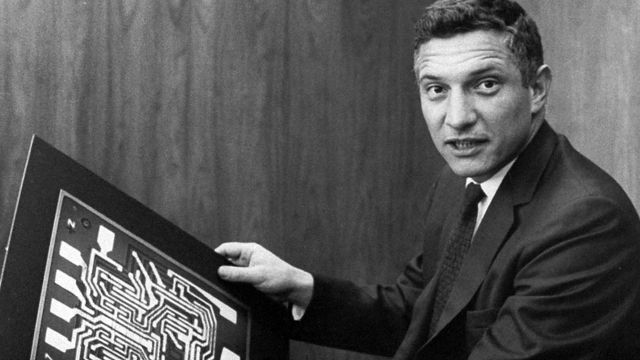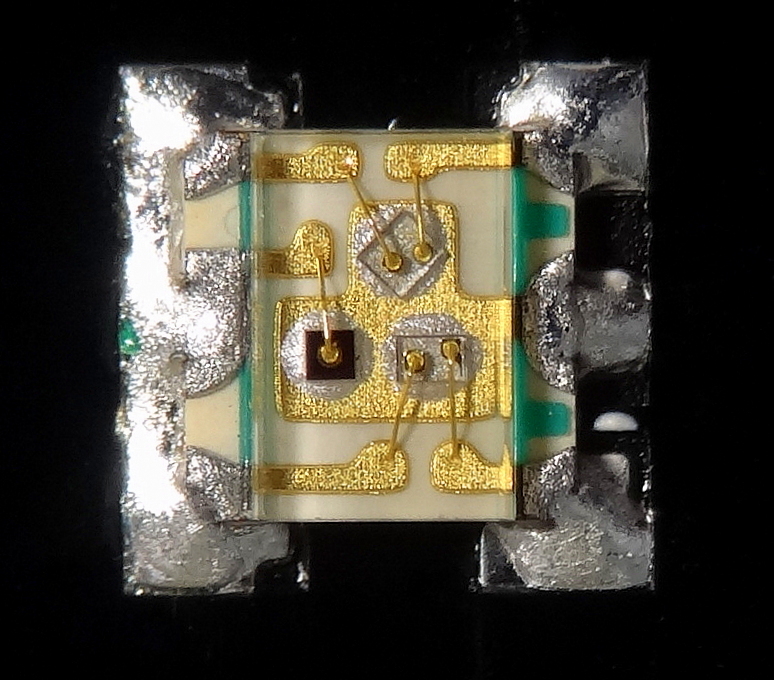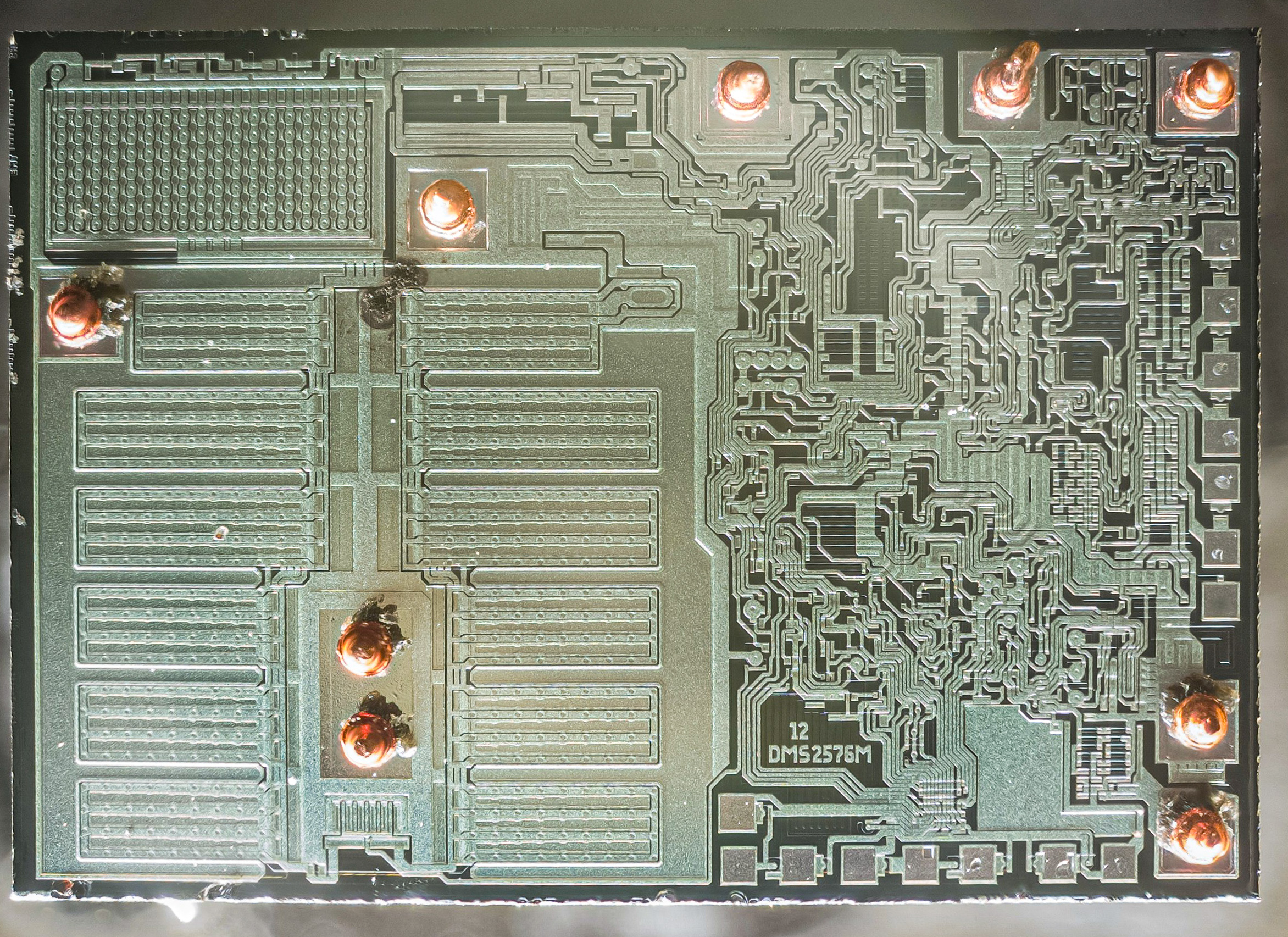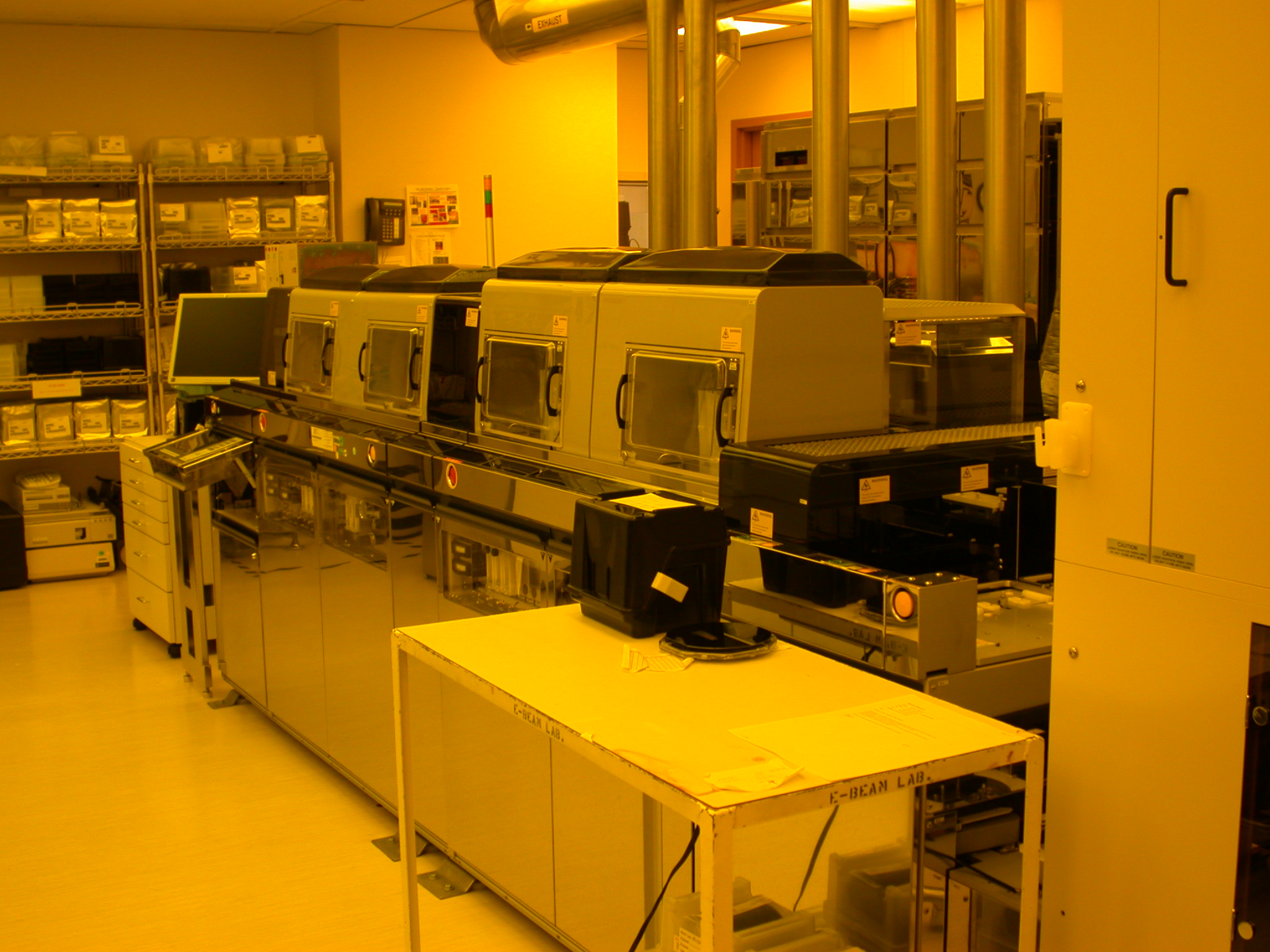|
Redistribution Layer
A redistribution layer (RDL) is an extra metal layer on an integrated circuit that makes its Input/output, I/O pads available in other locations of the chip, for better access to the pads where necessary. When an integrated circuit is manufactured, it usually has a set of I/O pads that are Wire bonding, wirebonded to the pins of the package. A redistribution layer is an extra layer of wiring on the chip that enables bond out from different locations on the chip, making chip-to-chip bonding simpler. Another example of the use for RDL is for spreading the contact points around the Die (integrated circuit), die so that solder balls can be applied, and the thermal stress of mounting can be spread. The RDL is often made out of a polyamide, benzocyclobutene (BCB) or polybenzoxazole (PBO) with copper plated on its surface. See also *Semiconductor device fabrication References External links Redistribution tutorial Semiconductor device fabrication Packaging (microfabrication) {{e ... [...More Info...] [...Related Items...] OR: [Wikipedia] [Google] [Baidu] |
Integrated Circuit
An integrated circuit (IC), also known as a microchip or simply chip, is a set of electronic circuits, consisting of various electronic components (such as transistors, resistors, and capacitors) and their interconnections. These components are etched onto a small, flat piece ("chip") of semiconductor material, usually silicon. Integrated circuits are used in a wide range of electronic devices, including computers, smartphones, and televisions, to perform various functions such as processing and storing information. They have greatly impacted the field of electronics by enabling device miniaturization and enhanced functionality. Integrated circuits are orders of magnitude smaller, faster, and less expensive than those constructed of discrete components, allowing a large transistor count. The IC's mass production capability, reliability, and building-block approach to integrated circuit design have ensured the rapid adoption of standardized ICs in place of designs using discre ... [...More Info...] [...Related Items...] OR: [Wikipedia] [Google] [Baidu] |
Input/output
In computing, input/output (I/O, i/o, or informally io or IO) is the communication between an information processing system, such as a computer, and the outside world, such as another computer system, peripherals, or a human operator. Inputs are the signals or data received by the system and outputs are the signals or data sent from it. The term can also be used as part of an action; to "perform I/O" is to perform an input or output operation. are the pieces of hardware used by a human (or other system) to communicate with a computer. For instance, a keyboard or computer mouse is an input device for a computer, while monitors and printers are output devices. Devices for communication between computers, such as modems and network cards, typically perform both input and output operations. Any interaction with the system by an interactor is an input and the reaction the system responds is called the output. The designation of a device as either input or output depend ... [...More Info...] [...Related Items...] OR: [Wikipedia] [Google] [Baidu] |
Wire Bonding
Wire bonding is a method of making interconnections between an integrated circuit (IC) or other semiconductor device and its packaging during semiconductor device fabrication. Wire bonding can also be used to connect an IC to other electronics or to connect from one printed circuit board (PCB) to another, although these are less common. Wire bonding is generally considered the most cost-effective and flexible interconnect technology and is used to assemble the vast majority of semiconductor packages. Wire bonding can be used at frequencies above 100 GHz. [...More Info...] [...Related Items...] OR: [Wikipedia] [Google] [Baidu] |
Die (integrated Circuit)
A die, in the context of integrated circuits, is a small block of semiconducting material on which a given functional circuit is Semiconductor fabrication, fabricated. Typically, integrated circuits are produced in large batches on a single wafer (electronics), wafer of electronic-grade Monocrystalline silicon, silicon (EGS) or other semiconductor (such as Gallium arsenide, GaAs) through processes such as photolithography. The wafer is cut (wafer dicing, diced) into many pieces, each containing one copy of the circuit. Each of these pieces is called a die. There are three commonly used plural forms: ''dice'', ''dies,'' and ''die''. To simplify handling and integration onto a printed circuit board, most dies are integrated circuit packaging, packaged in List of electronic component packaging types, various forms. Manufacturing process Most dies are composed of silicon and used for integrated circuits. The process begins with the production of Single crystal, monocrystalline sili ... [...More Info...] [...Related Items...] OR: [Wikipedia] [Google] [Baidu] |
Solder Ball
In integrated circuit packaging, a solder ball, also a solder bump (often referred to simply as "ball" or "bumps") is a ball of solder that provides the contact between the chip package and the printed circuit board, as well as between stacked packages in multichip modules; in the latter case, they may be referred to as microbumps (μbumps, ubumps), since they are usually significantly smaller than the former. The solder balls can be placed manually or by automated equipment, and are held in place with a tacky flux. A coined solder ball is a solder ball subject to coining, i.e., flattening to a shape resembling that of a coin, to increase contact reliability. Ball grid array, chip-scale package, and flip chip packages generally use solder balls. Underfill After the solder balls are used to attach an integrated circuit chip to a printed circuit board (PCB), often the remaining air gap between them is underfilled with epoxy. In some cases, there may be multiple layers of so ... [...More Info...] [...Related Items...] OR: [Wikipedia] [Google] [Baidu] |
Thermal Stress
In mechanics and thermodynamics, thermal stress is mechanical stress created by any change in temperature Temperature is a physical quantity that quantitatively expresses the attribute of hotness or coldness. Temperature is measurement, measured with a thermometer. It reflects the average kinetic energy of the vibrating and colliding atoms making ... of a material. These stresses can lead to fracturing or plastic deformation depending on the other variables of heating, which include material types and constraints. Temperature gradients, thermal expansion or contraction and thermal shocks are things that can lead to thermal stress. This type of stress is highly dependent on the thermal expansion coefficient which varies from material to material. In general, the greater the temperature change, the higher the level of stress that can occur. Thermal shock can result from a rapid change in temperature, resulting in cracking or shattering. Temperature gradients When a ... [...More Info...] [...Related Items...] OR: [Wikipedia] [Google] [Baidu] |
Polyamide
A polyamide is a polymer with repeating units linked by amide bonds. Polyamides occur both naturally and artificially. Examples of naturally occurring polyamides are proteins, such as wool and silk. Artificially made polyamides can be made through step-growth polymerization or solid-phase synthesis yielding materials such as nylons, aramids, and sodium polyaspartate. Synthetic polyamides are commonly used in textiles, automotive industry, carpets, kitchen utensils and sportswear due to their high durability and strength. The transportation manufacturing industry is the major consumer, accounting for 35% of polyamide (PA) consumption. Classification Polymers of amino acids are known as polypeptides or proteins. According to the composition of their main chain, synthetic polyamides are classified as follows: All polyamides are made by the formation of an amide function to link two molecules of monomer together. The monomers can be amides themselves (usually in the form of a ... [...More Info...] [...Related Items...] OR: [Wikipedia] [Google] [Baidu] |
Benzocyclobutene
Benzocyclobutene (BCB) is a benzene ring fused to a cyclobutane ring. It has chemical formula . BCB is frequently used to create photosensitive polymers. BCB-based polymer dielectrics may be spun on or applied to various substrates for use in Micro Electro-Mechanical Systems (MEMS) and microelectronics processing. Applications include wafer bonding, optical interconnects, low-κ dielectrics, or even intracortical neural implants. Reactions Benzocyclobutene is a strained system which, upon heating to approximately 180 °C, causes the cyclobutene to undergo a conrotatory ring-opening reaction, forming ''o''-xylylene. Since this process destroys the aromaticity of the benzene ring, the reverse reaction is highly favored. ''o''-Xylylenes generated in this way have been used prolifically in cycloaddition reactions, which restore the aromaticity to the benzene ring, while forming a new annulated species. Uses The benzocyclobutene moiety has also appeared in a number of chemi ... [...More Info...] [...Related Items...] OR: [Wikipedia] [Google] [Baidu] |
Polybenzoxazole
Zylon (IUPAC name: poly(''p''-phenylene-2,6-benzobisoxazole)) is a trademarked name for a range of thermoset liquid-crystalline polyoxazole. This synthetic polymer material was invented and developed by SRI International in the 1980s and manufactured by Toyobo. In generic usage, the fiber is referred to as PBO. Zylon has 5.8 GPa of tensile strength, which is 1.6 times that of Kevlar. Additionally, Zylon has a high Young's modulus of 270 GPa, meaning that it is stiffer than steel. Like Kevlar, Zylon is used in a number of applications that require very high strength with excellent thermal stability. The material has been used in body armour, in tennis racquets, table tennis paddles, and in snowboards, in various medical applications, and in some of the Martian rovers. Usage Body armor Zylon gained wide use in U.S. police officers body armor protection in 1998 with its introduction by Second Chance Body Armor, Inc. in its "Ultima" and "Ultimax" protective vests. At least as ... [...More Info...] [...Related Items...] OR: [Wikipedia] [Google] [Baidu] |
Semiconductor Device Fabrication
Semiconductor device fabrication is the process used to manufacture semiconductor devices, typically integrated circuits (ICs) such as microprocessors, microcontrollers, and memories (such as Random-access memory, RAM and flash memory). It is a multiple-step Photolithography, photolithographic and physico-chemical process (with steps such as thermal oxidation, thin-film deposition, ion-implantation, etching) during which electronic circuits are gradually created on a wafer (electronics), wafer, typically made of pure single-crystal semiconducting material. Silicon is almost always used, but various compound semiconductors are used for specialized applications. This article focuses on the manufacture of integrated circuits, however steps such as etching and photolithography can be used to manufacture other devices such as LCD and OLED displays. The fabrication process is performed in highly specialized semiconductor fabrication plants, also called foundries or "fabs", with the cen ... [...More Info...] [...Related Items...] OR: [Wikipedia] [Google] [Baidu] |






